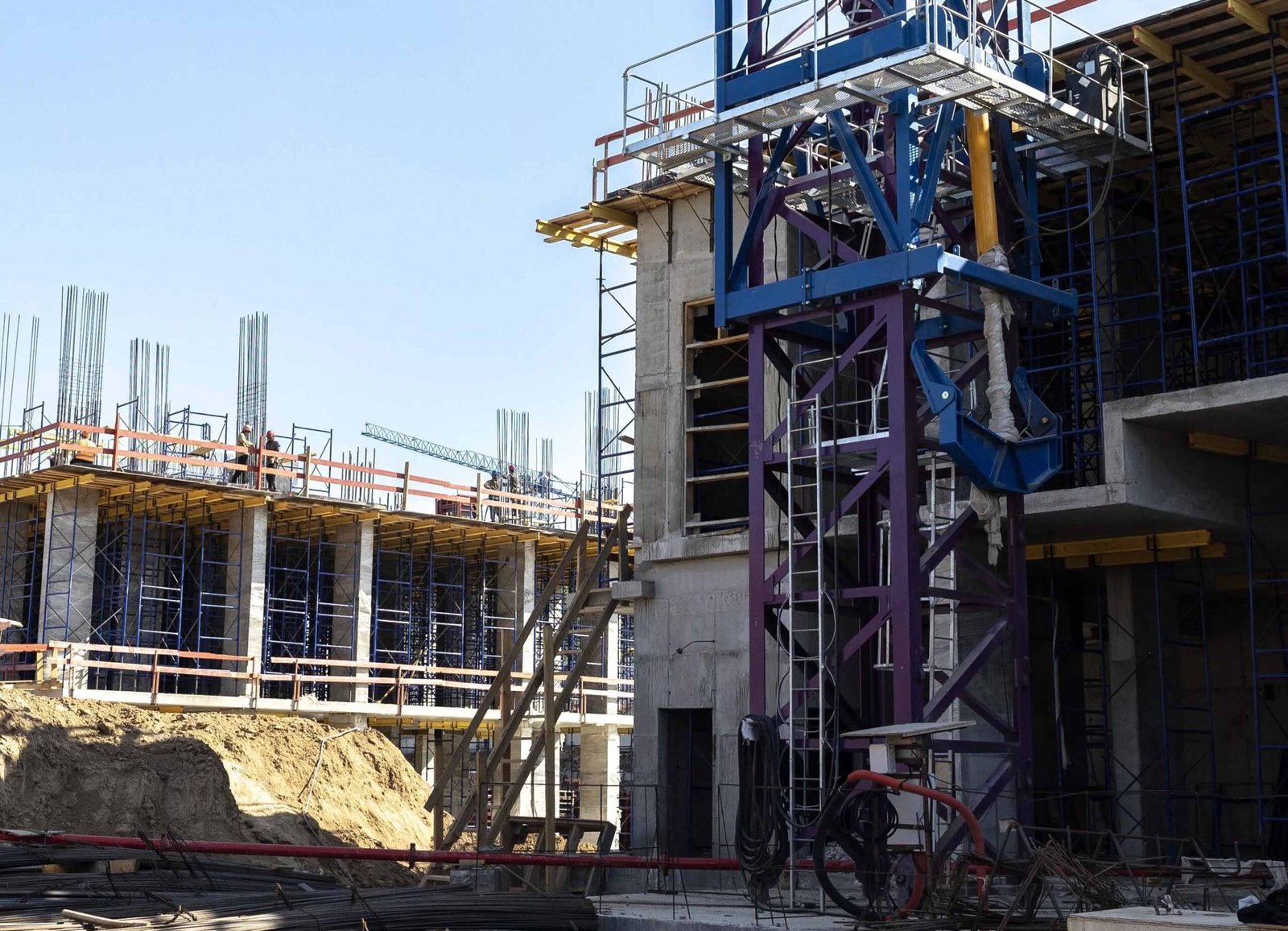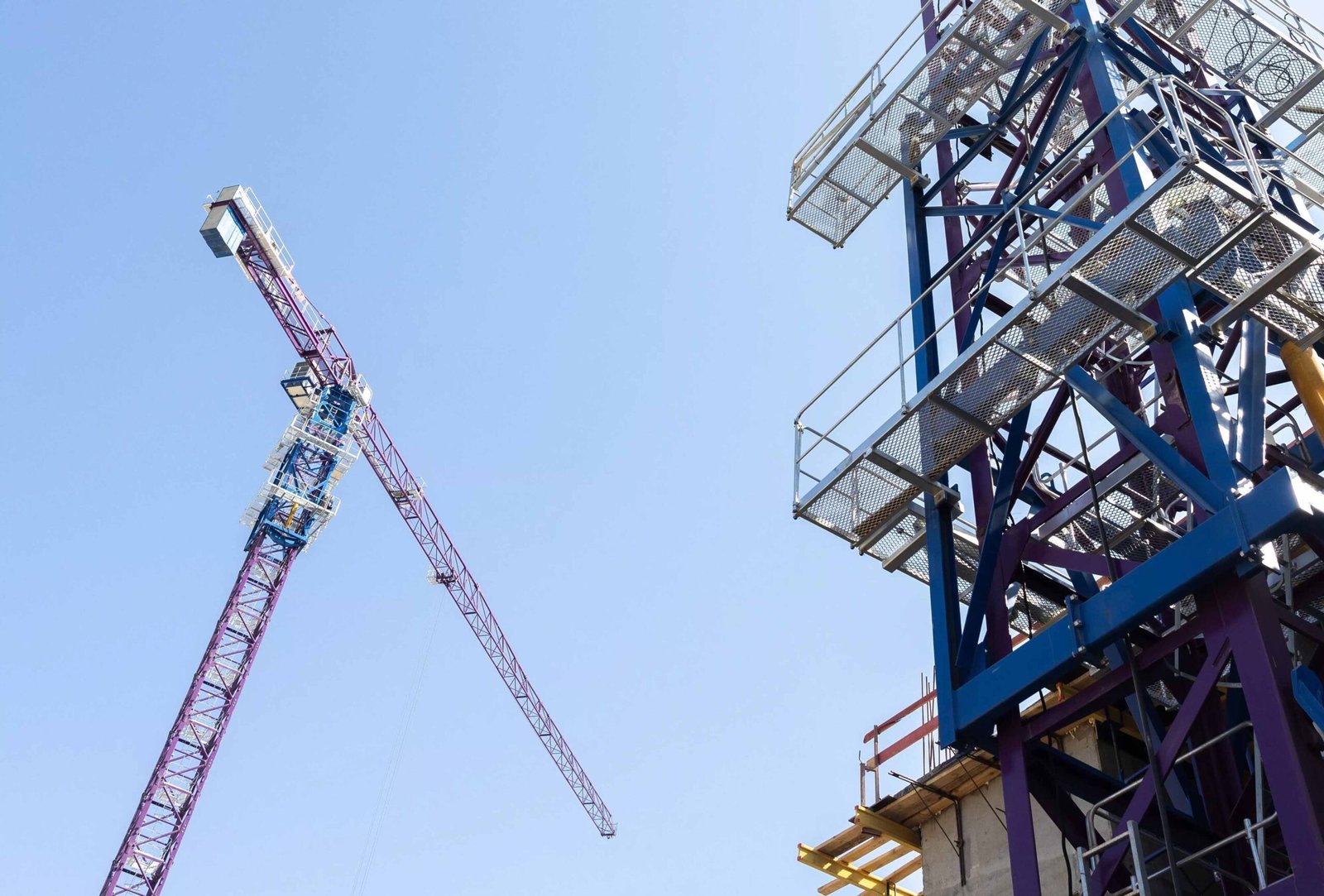
Tower cranes are essential for large construction projects, but how do they stay stable? The foundation is the key. Let’s explore the common foundation types and how they support these massive machines.
Tower crane foundations1 rely on specific types of foundations to ensure stability and safety during lifting operations.
The foundation of a tower crane plays a crucial role in ensuring that the crane can lift heavy loads without tipping over. Let’s take a closer look at the foundation types commonly used.
What is the Foundation of a Crane?

Every tower crane stands on a foundation that supports its immense weight and stability. But what exactly does this foundation consist of?
A tower crane foundation2 is a solid, reinforced base designed to bear the weight of the crane and its load.
The foundation of a crane is designed to distribute the weight of the crane and the loads it lifts safely across the ground. It typically consists of reinforced concrete, which is capable of bearing heavy loads without shifting or cracking.
Foundation Design
The design of the crane foundation depends on the type of crane and the type of terrain it is placed on. Most commonly, crane foundations include concrete pads3 or mats that provide stability. These pads are reinforced with steel to prevent cracking and movement under the weight of the crane.
The size of the foundation is determined based on factors like the crane’s size, lifting capacity, and the soil conditions at the site. For example, if the soil is soft, the foundation needs to be larger to distribute the weight evenly.
| Foundation Type | Materials Used | Purpose |
|---|---|---|
| Concrete Pads | Reinforced Concrete | Distributes crane weight evenly |
| Concrete Mat4 | Concrete, Steel | Supports larger cranes and heavy loads |
| Pile Foundations5 | Concrete, Steel | Used in soft soil or deep ground |
This foundation ensures that the crane remains stable even when lifting loads of several tons.
What is the Base of a Tower Crane?

The base of a tower crane is crucial for its stability and function. But what exactly makes up the base of a tower crane?
The base of a tower crane is the structure that anchors the crane to the ground, providing support and stability.
The base of a tower crane is typically a large, concrete slab or foundation that holds the crane upright. This base is designed to anchor the crane securely to the ground to prevent any tipping or shifting during operation.
Components of the Crane Base
The crane’s base consists of a concrete slab that is often reinforced with steel. The slab is connected to the crane’s tower through bolted joints, which allow the crane to remain stable while lifting heavy loads.
For additional support, the crane may be fitted with guy wires6 or braces that further anchor it to the ground, especially in taller cranes. This ensures that the base can bear the stresses imposed by the crane’s movements and the weight of the loads.
| Component | Role in Stability | Function |
|---|---|---|
| Concrete Slab | Provides foundation | Distributes the weight of the crane |
| Bolted Joints | Connects crane to base | Prevents tipping and shifting |
| Guy Wires/Braces | Stabilizes crane | Adds additional support to the crane |
The base of a tower crane is fundamental in ensuring the crane’s stability and safety throughout its operation.
What Are Tower Cranes Usually Used to Build?

Tower cranes are iconic on construction sites, but what kinds of projects are they typically used for?
Tower cranes7 are commonly used to build tall structures like skyscrapers, bridges, and large industrial buildings.
Tower cranes are used for a variety of construction projects, but they are most often associated with building tall structures. Their ability to lift heavy loads to great heights makes them ideal for projects like skyscrapers, high-rise apartments, and large commercial buildings.
Types of Structures Built with Tower Cranes
Tower cranes are essential for the construction of:
- Skyscrapers: They lift steel, concrete, and glass to great heights, allowing builders to construct massive towers.
- Bridges: Tower cranes are used to build large bridges, helping to lift the heavy materials used in bridge construction.
- Industrial Buildings: Large factories and warehouses often require tower cranes to handle heavy machinery and construction materials.
- Residential High-Rises: Many high-rise apartments rely on tower cranes to transport building materials to upper floors.
| Project Type | Materials Lifted | Purpose |
|---|---|---|
| Skyscrapers | Steel, Concrete, Glass | Build tall and complex structures |
| Bridges | Steel, Concrete | Assist with lifting materials for long spans |
| Industrial Buildings | Machinery, Concrete | Build large-scale factories or warehouses |
| Residential High-Rises | Concrete, Steel | Build multi-story apartment complexes |
These cranes are essential for the efficient construction of these large and complex structures.
How Deep is a Tower Crane Foundation?

The depth of a tower crane foundation plays a critical role in its stability. How deep does it need to be?
The depth of a tower crane foundation depends on the crane’s size, lifting capacity, and soil conditions.
The depth of a tower crane foundation varies depending on the project. However, most foundations are between 1.5 to 3 meters deep. This depth ensures that the foundation can bear the weight of the crane and the loads it lifts.
Determining Foundation Depth
The depth of the foundation is determined by a number of factors:
- Cranes Size: Larger cranes require deeper foundations due to their greater weight and lifting capacity.
- Soil Type: Hard, stable soil requires less depth than soft, loose soil, which may require deeper foundations to provide adequate support.
- Load Requirements: Cranes designed to lift heavier loads generally need deeper foundations to prevent sinking or shifting.
In some cases, if the ground is unstable, additional foundation techniques, such as pile foundations8, may be used to anchor the crane securely.
| Factor | Foundation Depth | Purpose |
|---|---|---|
| Crane Size | 1.5m to 3m | Support heavy crane structure |
| Soil Type | Varies | Ensure stability in soft soils |
| Load Requirements | Deeper for heavier loads | Prevent sinking or shifting |
The depth of the foundation is carefully calculated to ensure the crane remains stable and can perform safely.
Conclusion
Tower crane foundations are critical for stability, ranging from concrete pads to deep, reinforced piles, depending on crane size and soil conditions.
-
Learn how the foundation type influences tower crane stability and safety. ↩
-
Understand the materials and design of tower crane foundations. ↩
-
Discover the role of concrete pads in supporting tower cranes. ↩
-
Understand the use of concrete mats in larger crane installations. ↩
-
Learn why pile foundations are used for cranes in soft soil conditions. ↩
-
Understand how guy wires stabilize taller tower cranes. ↩
-
Learn about the wide range of construction projects tower cranes support. ↩
-
Discover why pile foundations are used for cranes in unstable soil. ↩






